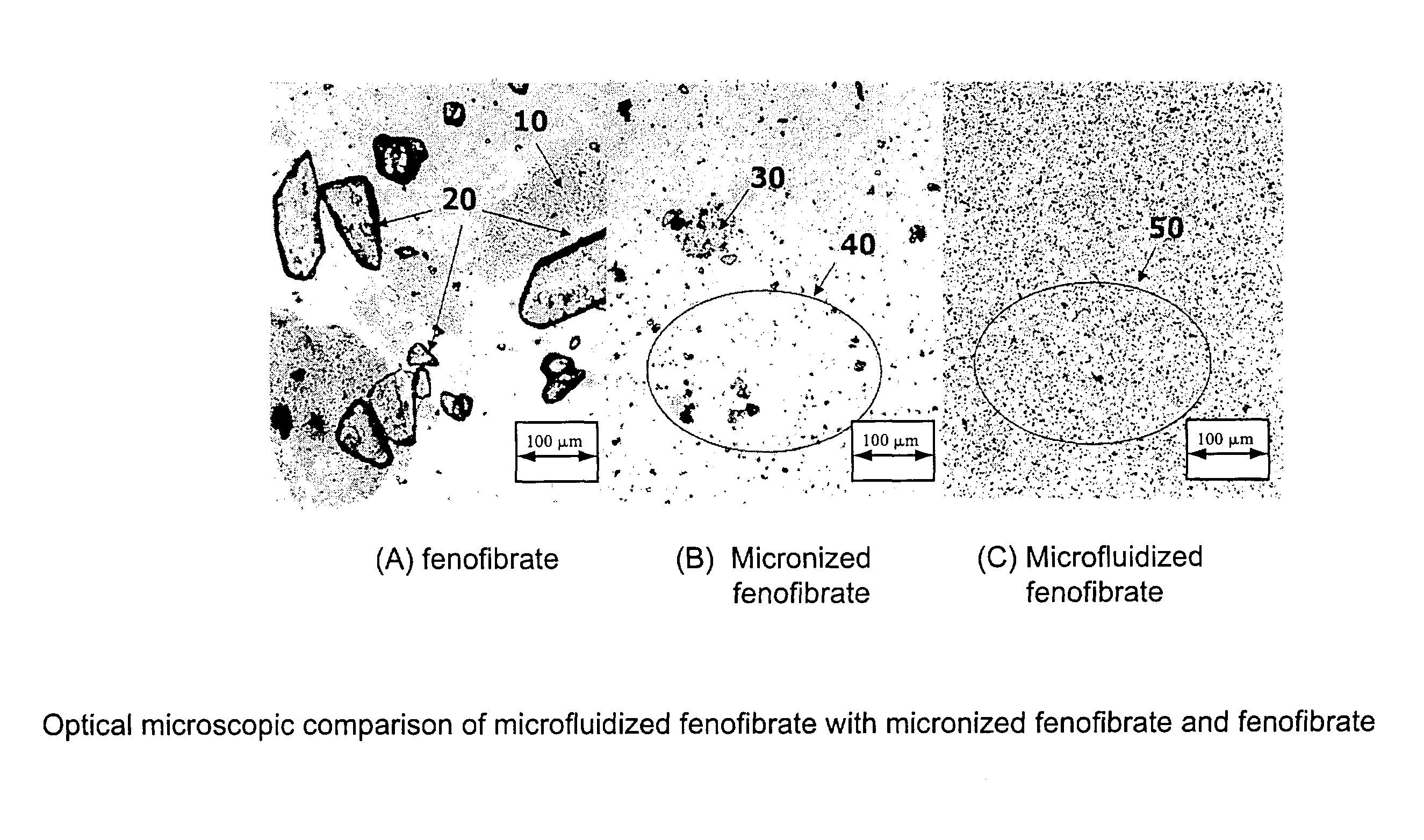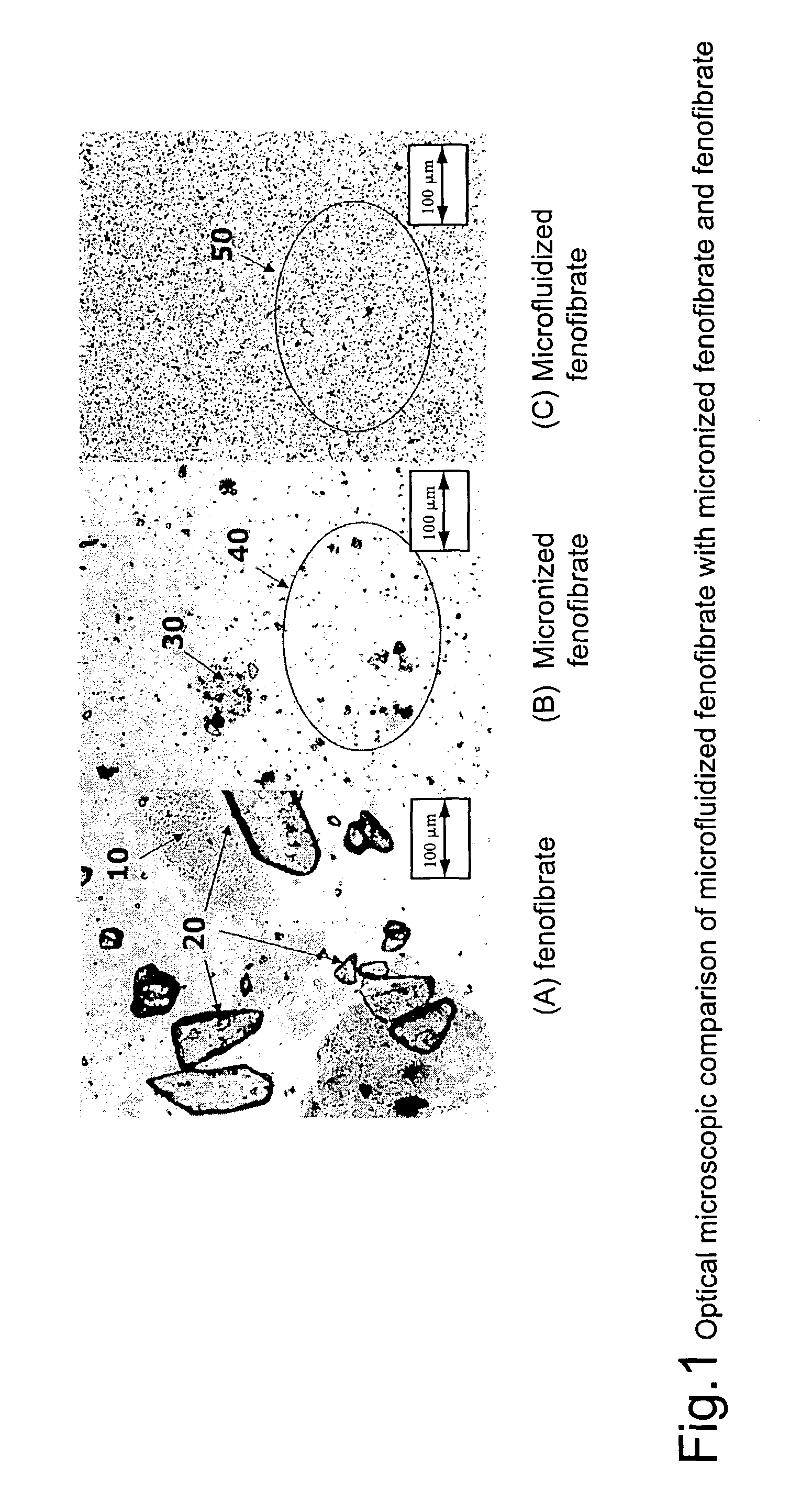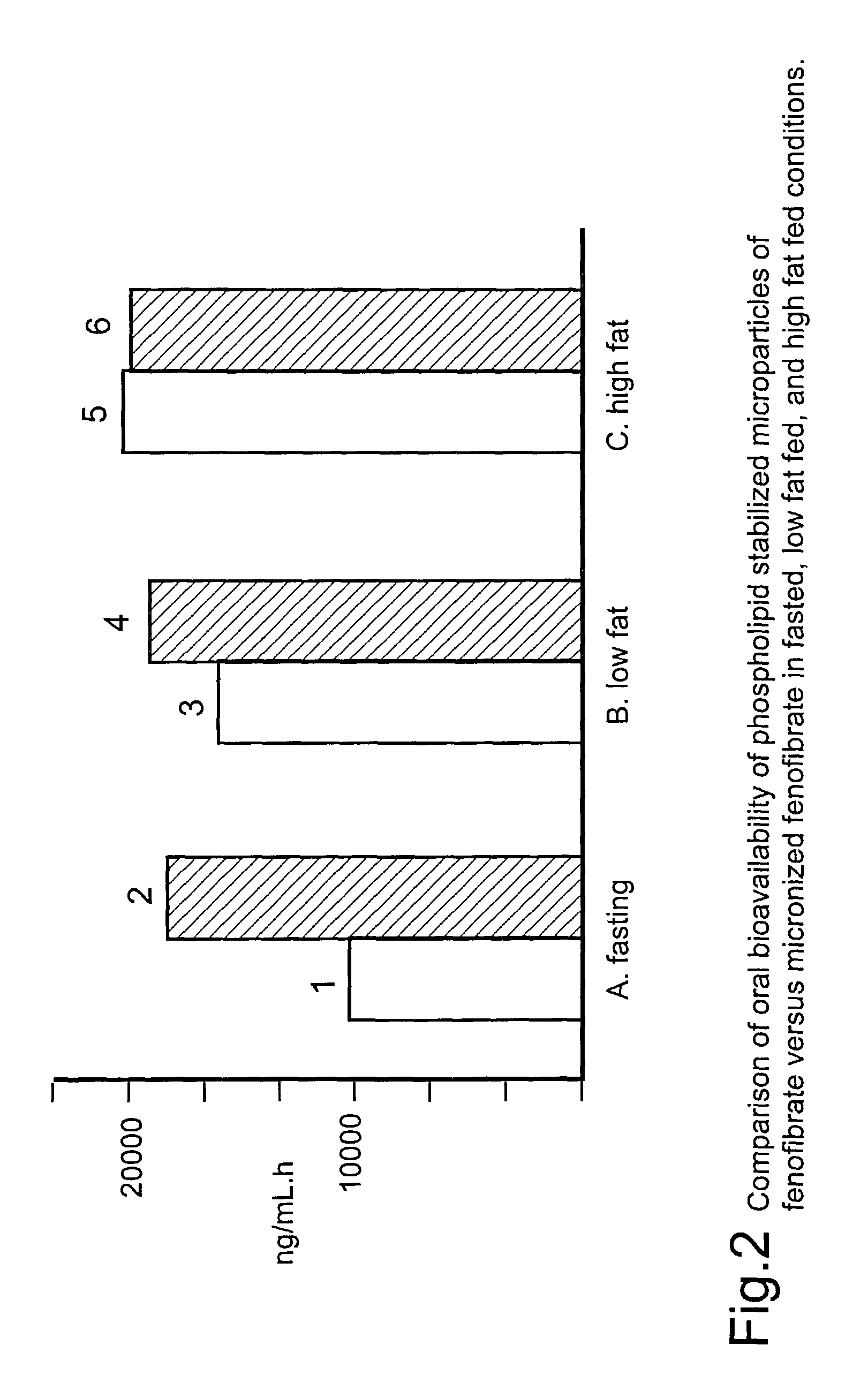Coated tablets
a technology of dislipoproteinemia and coated tablets, which is applied in the direction of phosphorous compound active ingredients, biocide, heterocyclic compound active ingredients, etc., can solve the problems of poor water soluble fenofibrate, practically insoluble, and normally poorly and variably absorbed, so as to reduce the difference, and stable to mechanical agitation
- Summary
- Abstract
- Description
- Claims
- Application Information
AI Technical Summary
Benefits of technology
Problems solved by technology
Method used
Image
Examples
example 1
[0404]A mixture of 60 parts of Lipoid E80 as the surface active substance and 200 parts of a poorly water soluble drug, fenofibrate, is homogeneously dispersed in 1440 parts of 10 mM pH 8.0+ / −0.2 aqueous phosphate buffer using a ProScientific 400 high shear mixer at 2,000 to 3,600 rpm at ambient temperature for 30 minutes, and then heated to 95° C., 15° C. above the melting point of the drug, during continuous high shear mixing at 2,500 to 4,000 rpm. The heated suspension is then recirculatively homogenized for 10 batch volume cycles or passes using a Microfluidizer M100Y operated at 3,400 to 3,600 psig while maintained at 85° C. to 99° C. to form a heated homogenate containing the drug. After 10 passes, the heated homogenate is cooled by passage through a heat exchanger cooled by chilled water at 5° C. to 10° C. and the transiently stable cooled homogenate is further homogenized for 10 to 20 batch volume cycles or passes using a Microfluidics M110 EH homogenizer operated at 18,000 ...
example 2
[0405]A mixture of 60 parts of Lipoid E80 as the surface active substance and 200 parts of a poorly water soluble drug, fenofibrate, is homogeneously dispersed in 1440 parts of 10 mM pH 8.0+ / − 0.2 aqueous phosphate buffer using a ProScientific 400 high shear mixer at 2,000 to 3,600 rpm at ambient temperature for 30 minutes, and then heated to 95° C., 15° C. above the melting point of the drug, during continuous high shear mixing at 2,500 to 4,000 rpm. The heated suspension is then recirculatively homogenized for 10 batch volume cycles or passes using a Microfluidizer M110Y operated at 3,400 to 3,600 psig while maintained at 80° C. to form a heated homogenate containing the drug. After 10 passes, the heated homogenate is cooled by passage through a heat exchanger chilled with ice water, kept at 4° C. for 30 min, and the transiently stable cooled homogenate is further homogenized for 10 to 20 batch volume cycles or passes using a Microfluidics M110 EH homogenizer operated at 18,000 ps...
example 3
[0406]A mixture of 60 parts of Lipoid E80 as the surface active substance and 200 parts of a poorly water soluble drug, fenofibrate, is homogeneously dispersed in 1440 parts of 10 mM pH 8.0+ / −0.2 aqueous phosphate buffer containing 240 parts of trehalose using a ProScientific 400 high shear mixer at 2,000 to 3,600 rpm at ambient temperature for 30 minutes, and then heated to 95° C., 15° C. above the melting point of the drug, during continuous high shear mixing at 2,500 to 4,000 rpm. The heated suspension is then recirculatively homogenized for 10 batch volume cycles or passes using a Microfluidizer M110Y homogenizer operated at 3,400 to 3,600 psig while maintained at 85° C. to 95° C. to form a heated homogenate containing the drug. After 10 passes, the heated homogenate is cooled by passage through a heat exchanger chilled with ice water, kept at 4° C. for 30 minutes in an ice / water bath, and the transiently stable cooled homogenate is further homogenized for 10 to 20 batch volume ...
PUM
| Property | Measurement | Unit |
|---|---|---|
| w/w | aaaaa | aaaaa |
| particle size distribution | aaaaa | aaaaa |
| particle size distribution | aaaaa | aaaaa |
Abstract
Description
Claims
Application Information
 Login to View More
Login to View More - R&D
- Intellectual Property
- Life Sciences
- Materials
- Tech Scout
- Unparalleled Data Quality
- Higher Quality Content
- 60% Fewer Hallucinations
Browse by: Latest US Patents, China's latest patents, Technical Efficacy Thesaurus, Application Domain, Technology Topic, Popular Technical Reports.
© 2025 PatSnap. All rights reserved.Legal|Privacy policy|Modern Slavery Act Transparency Statement|Sitemap|About US| Contact US: help@patsnap.com



